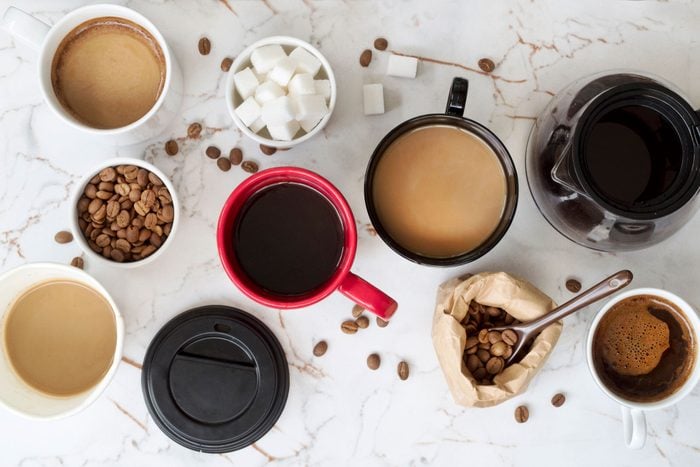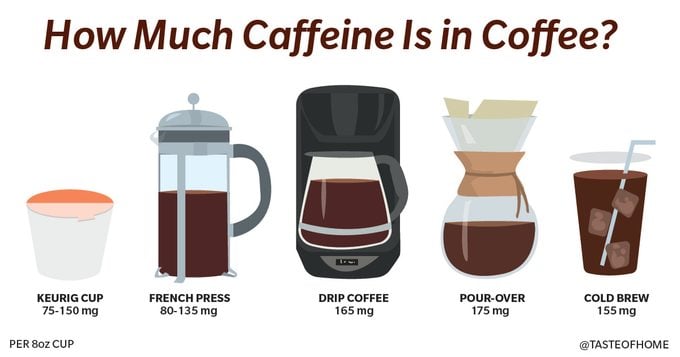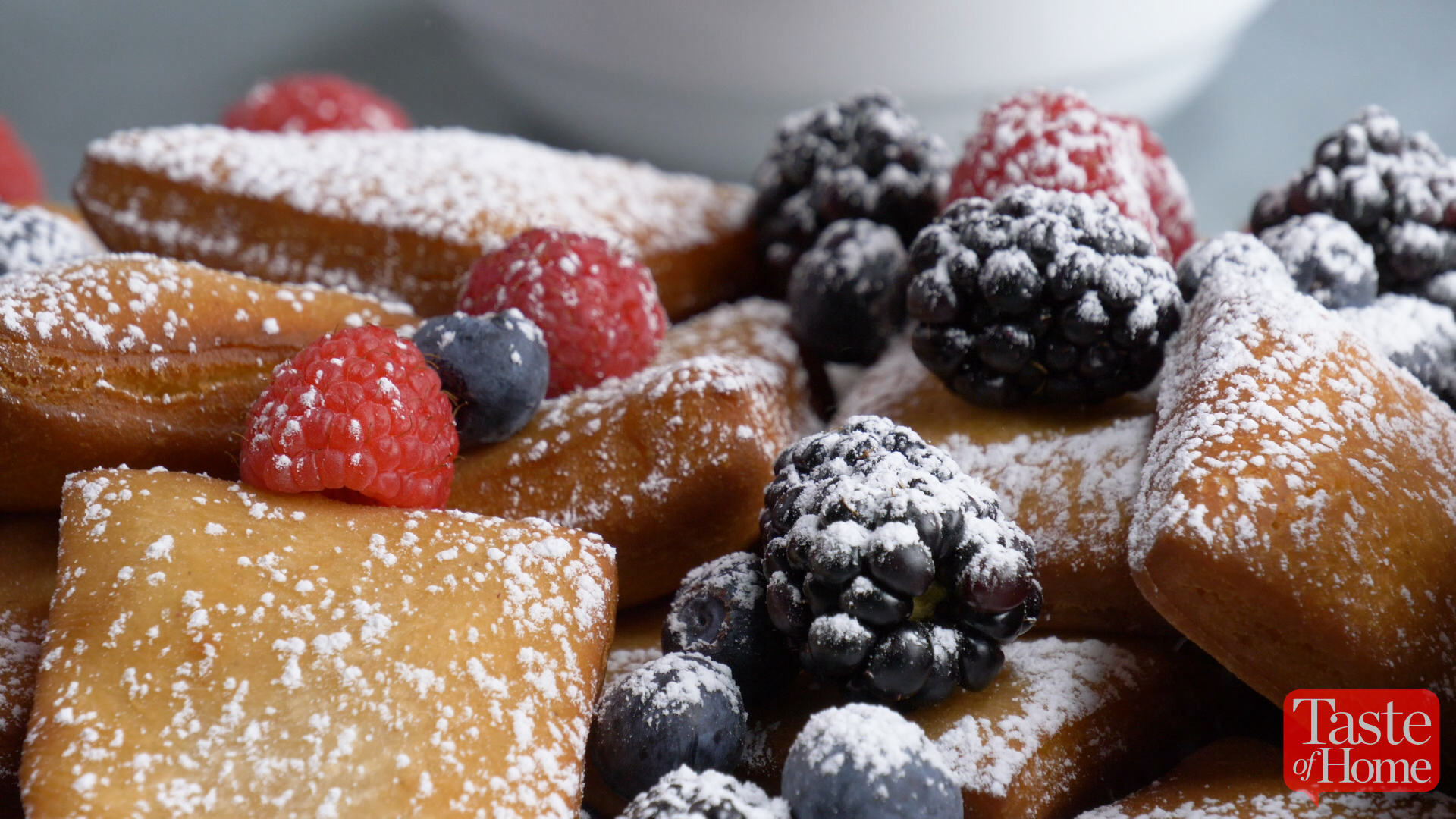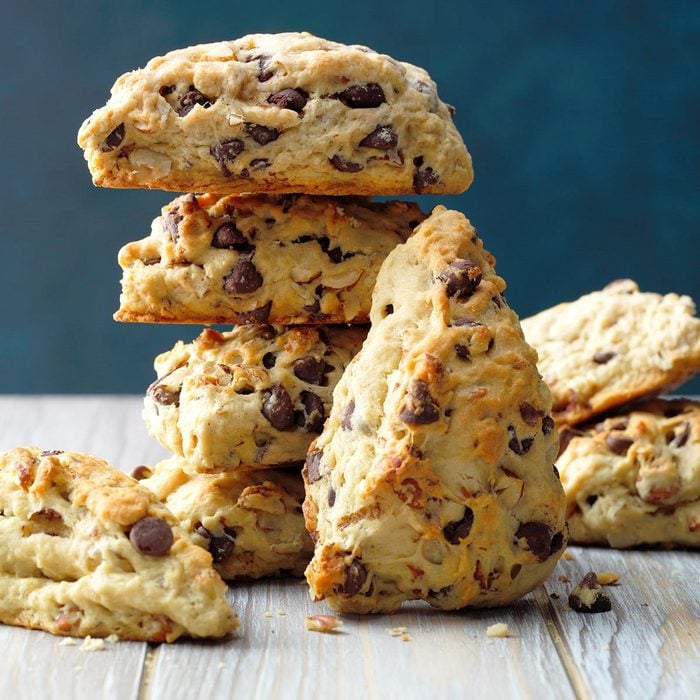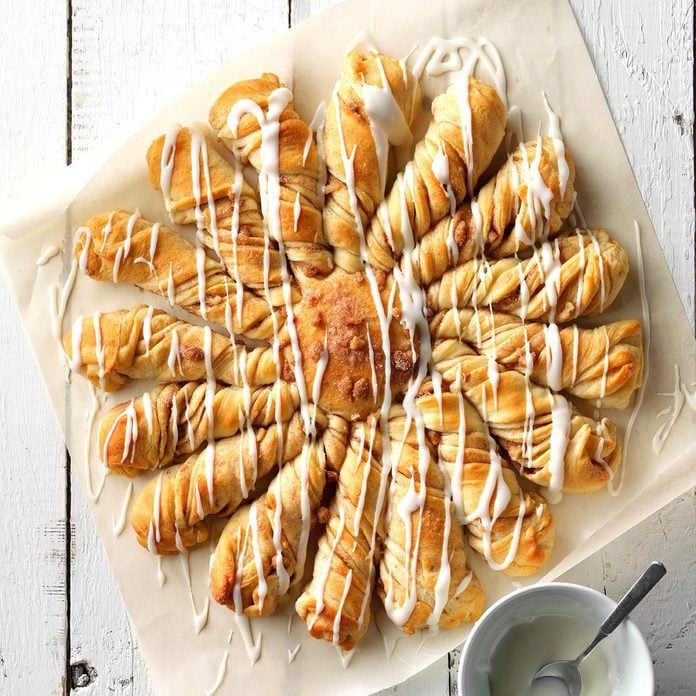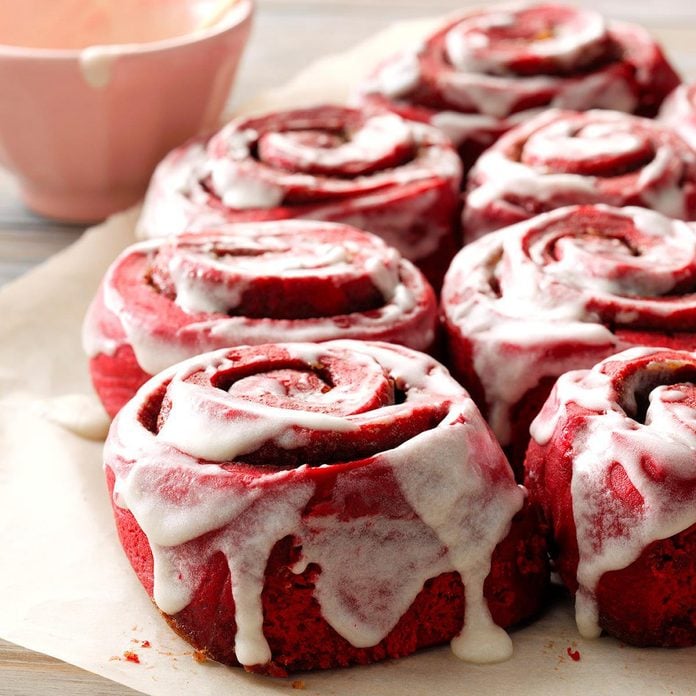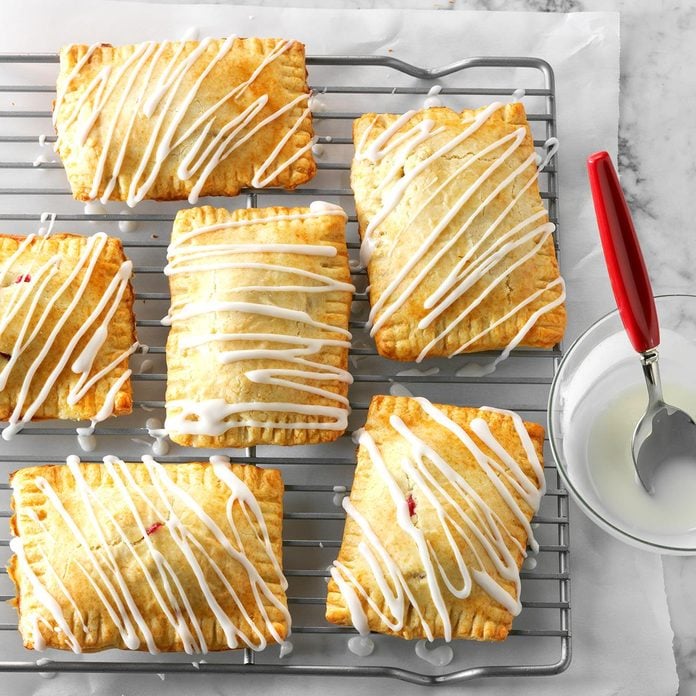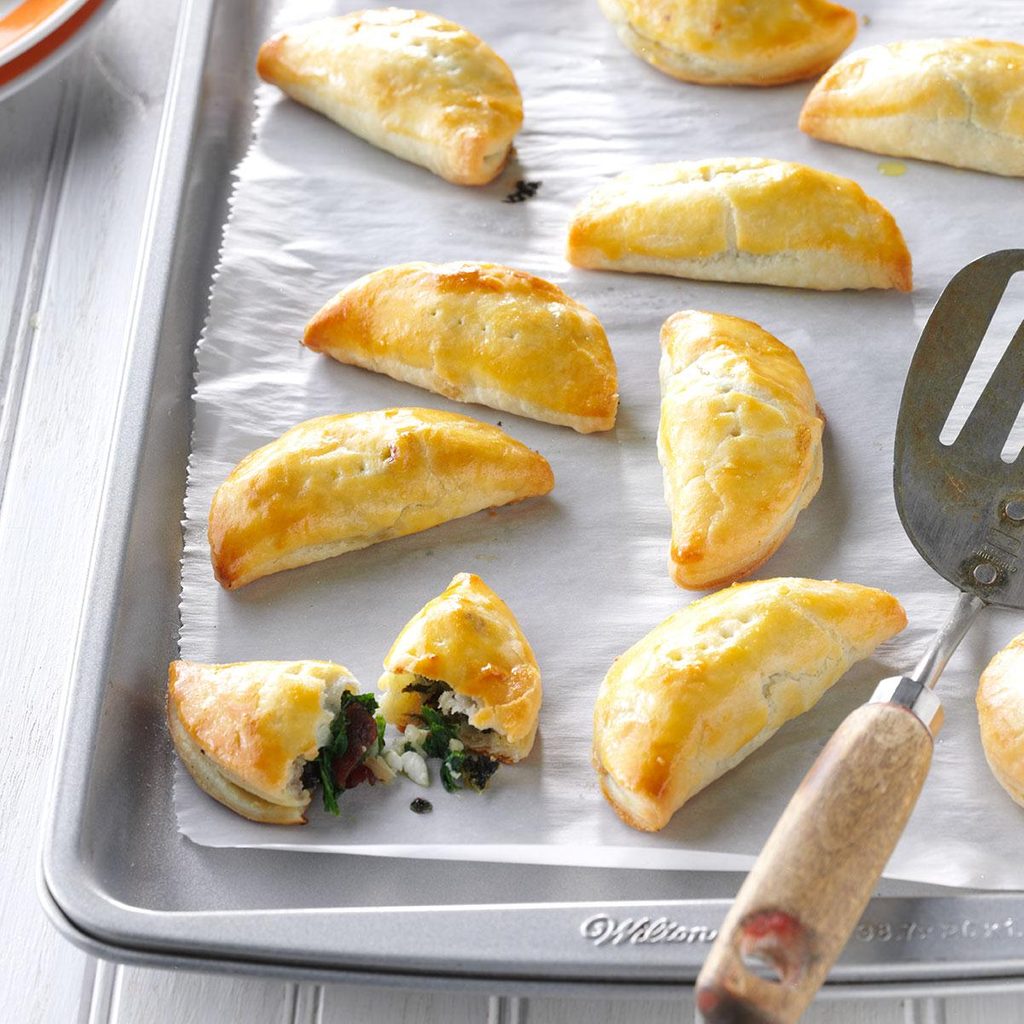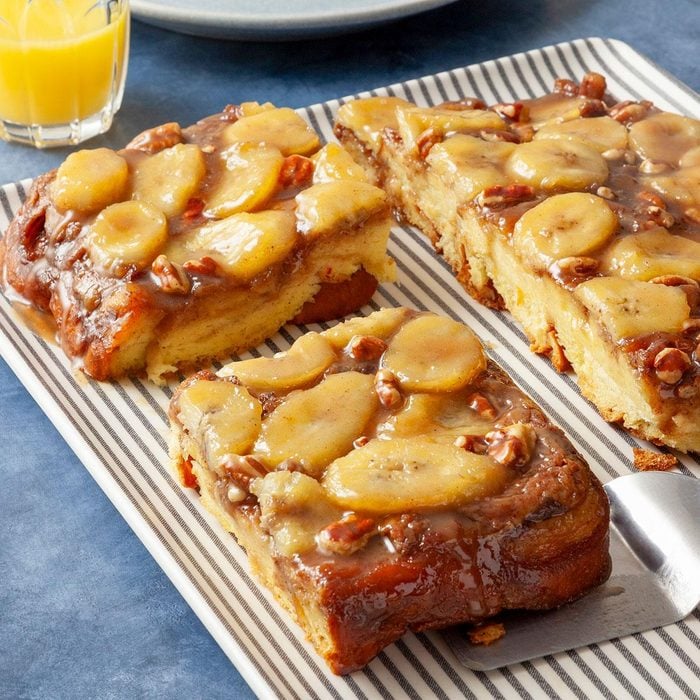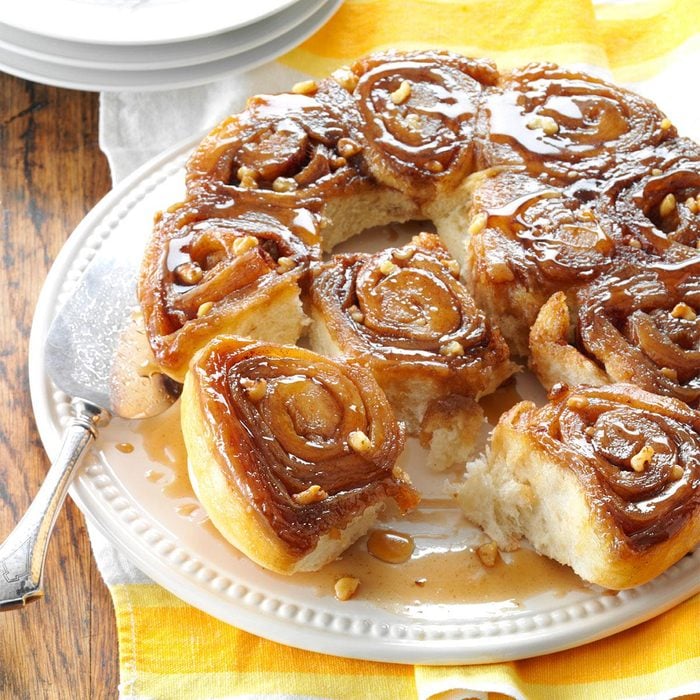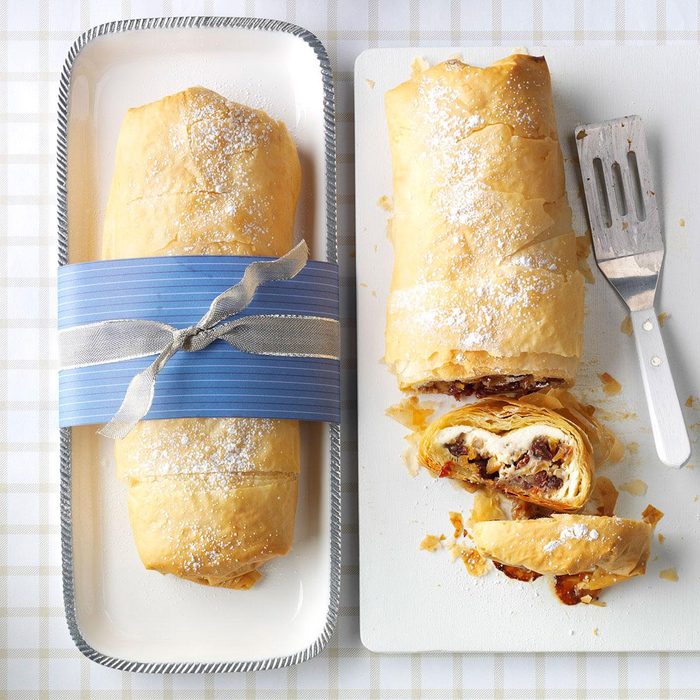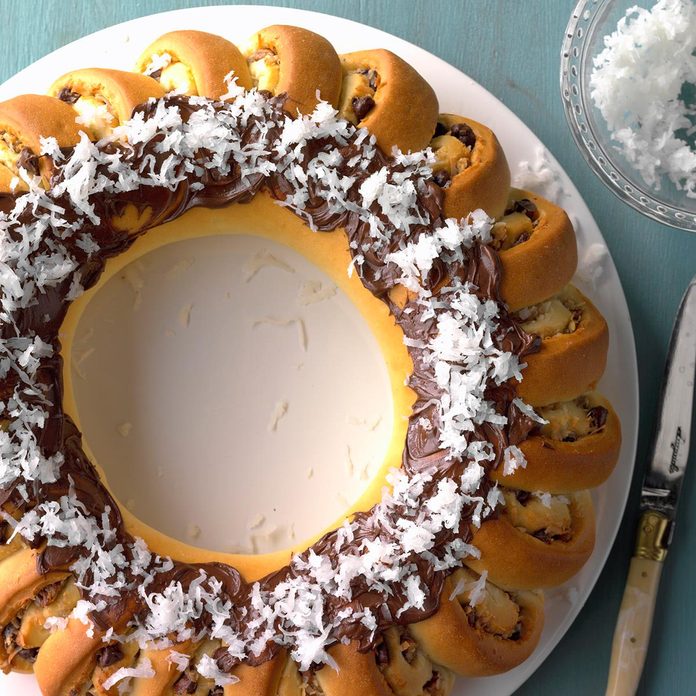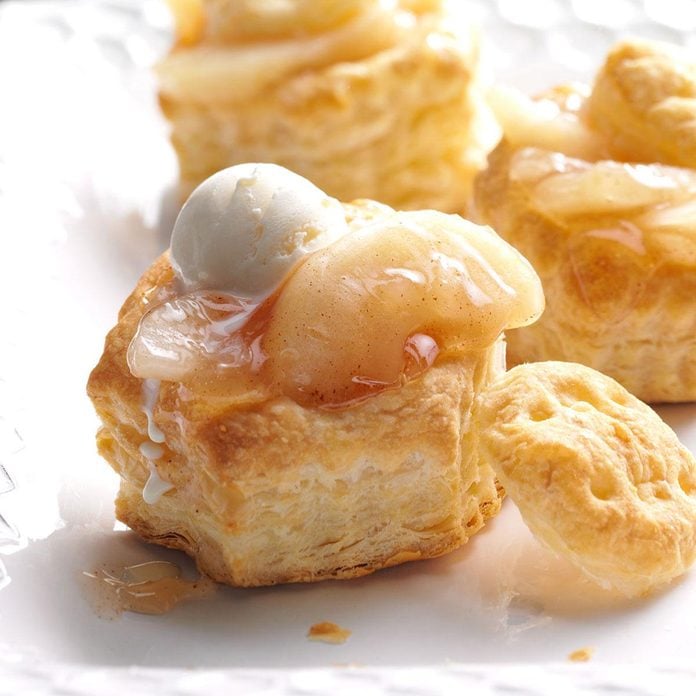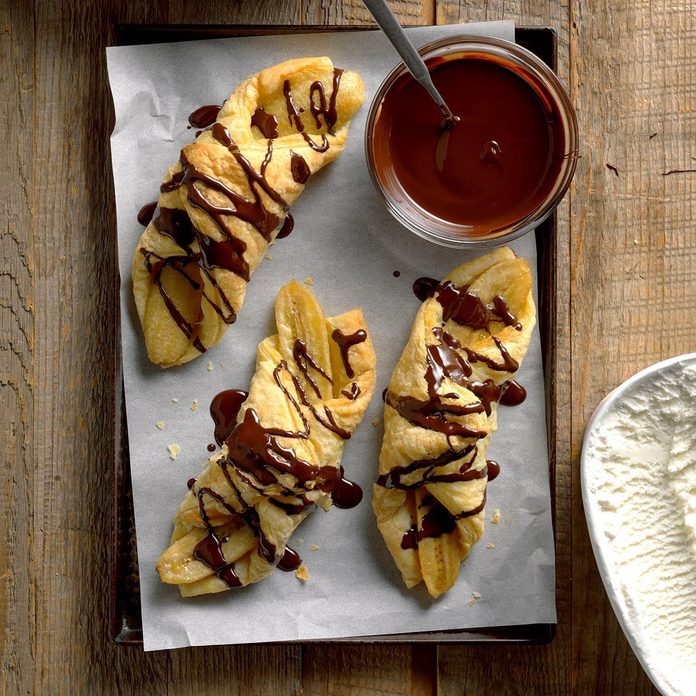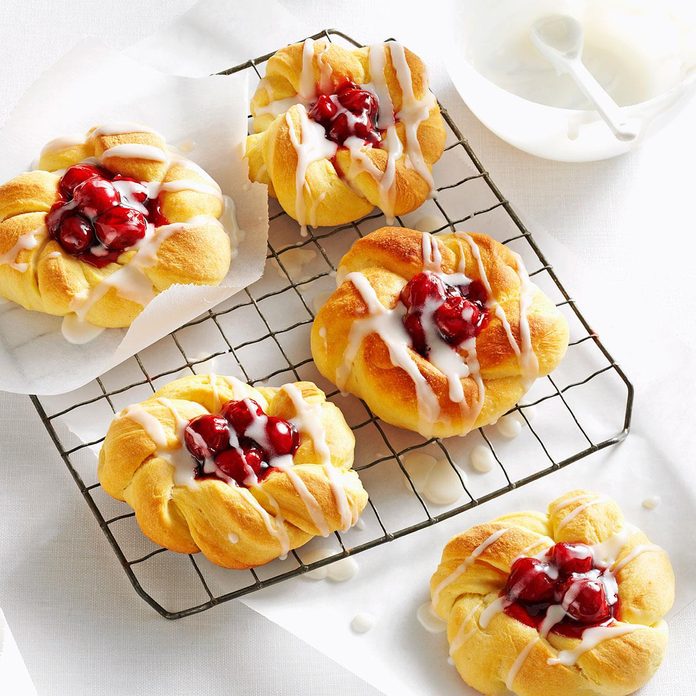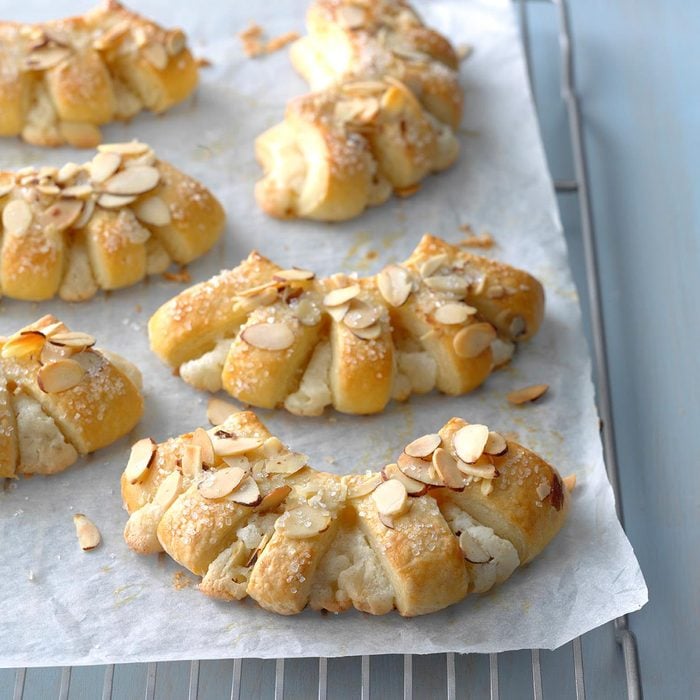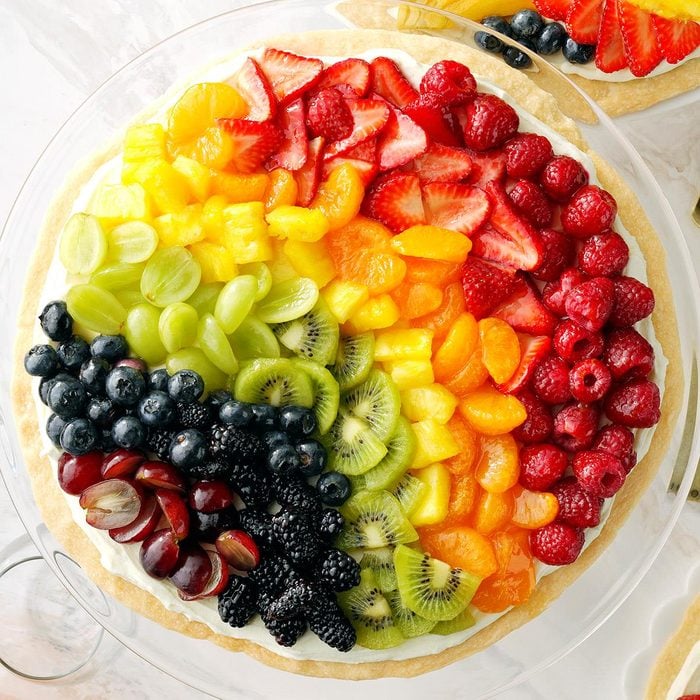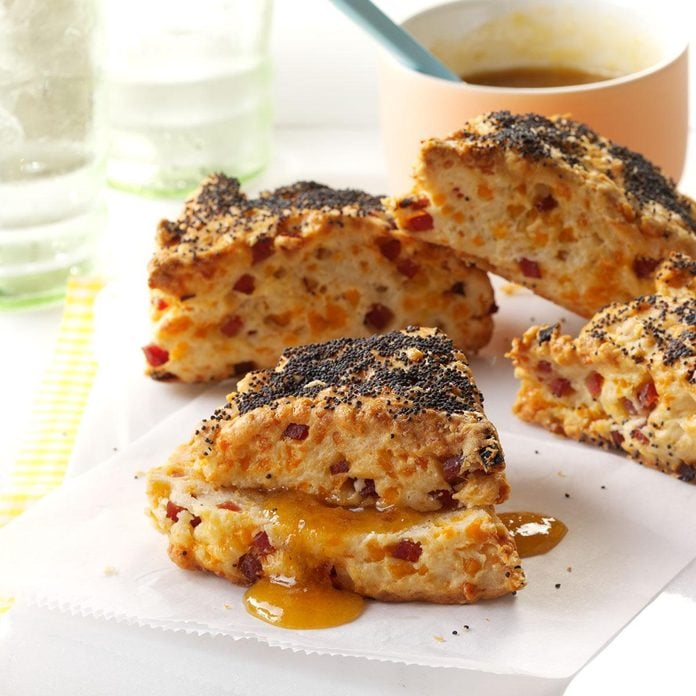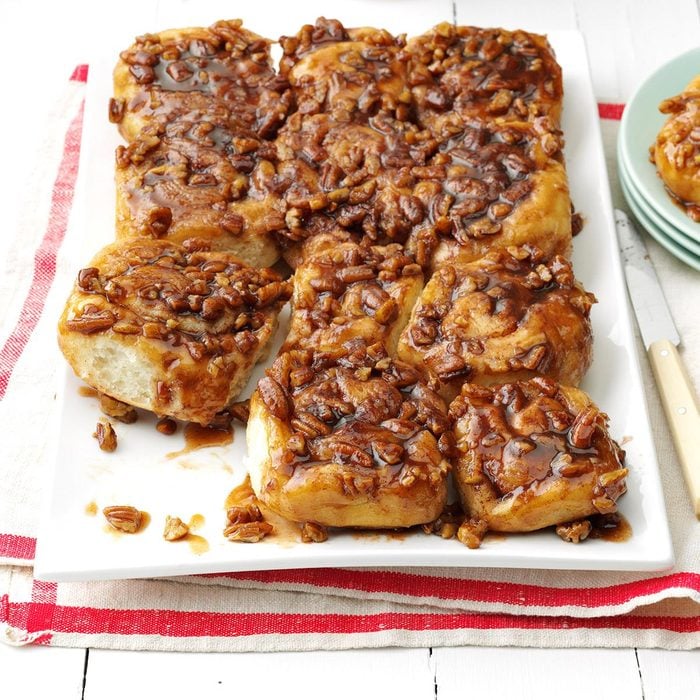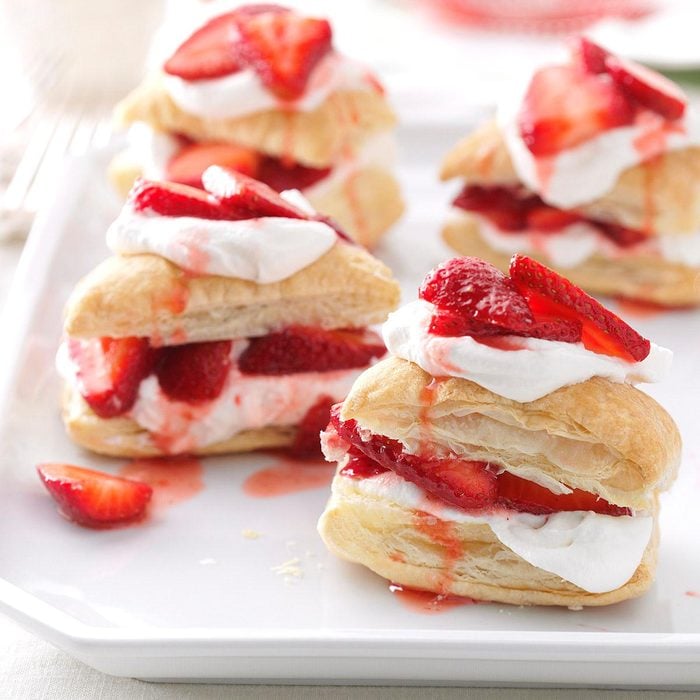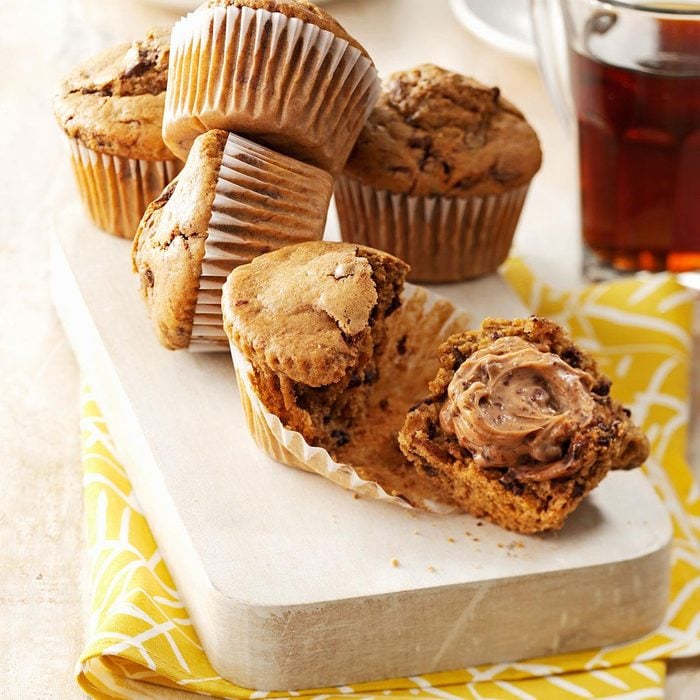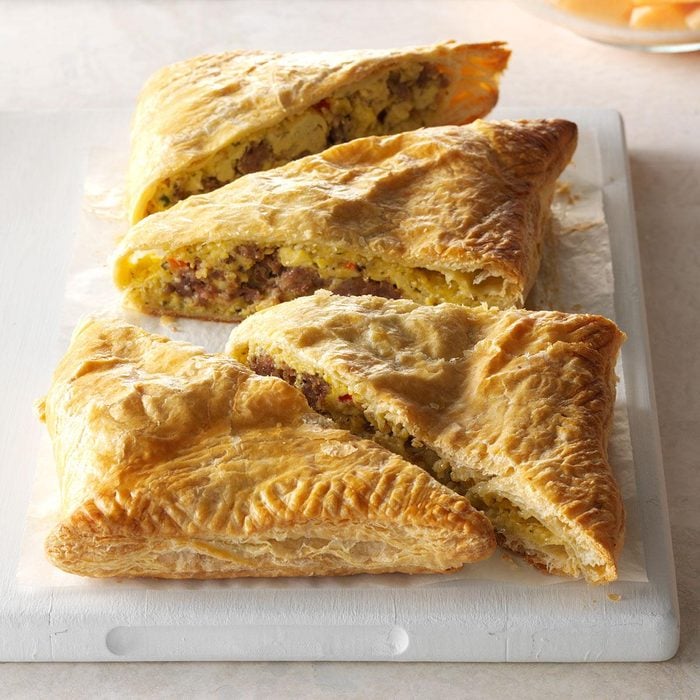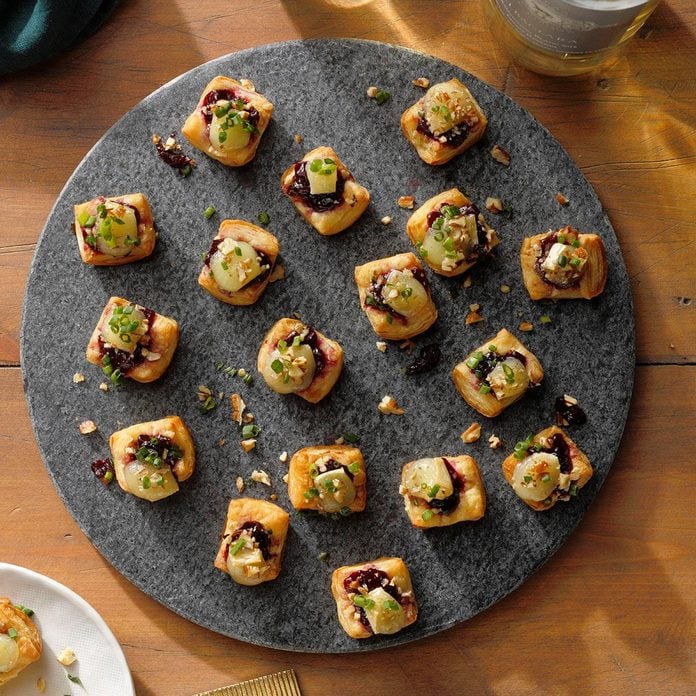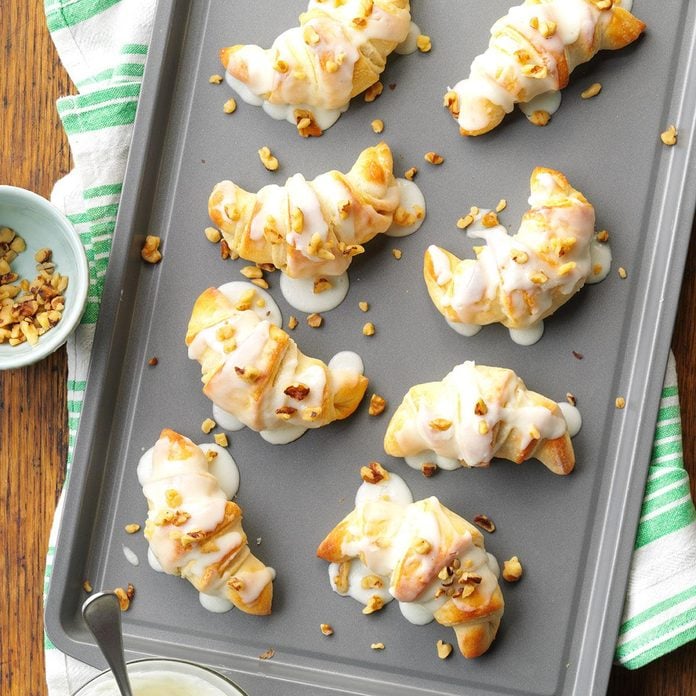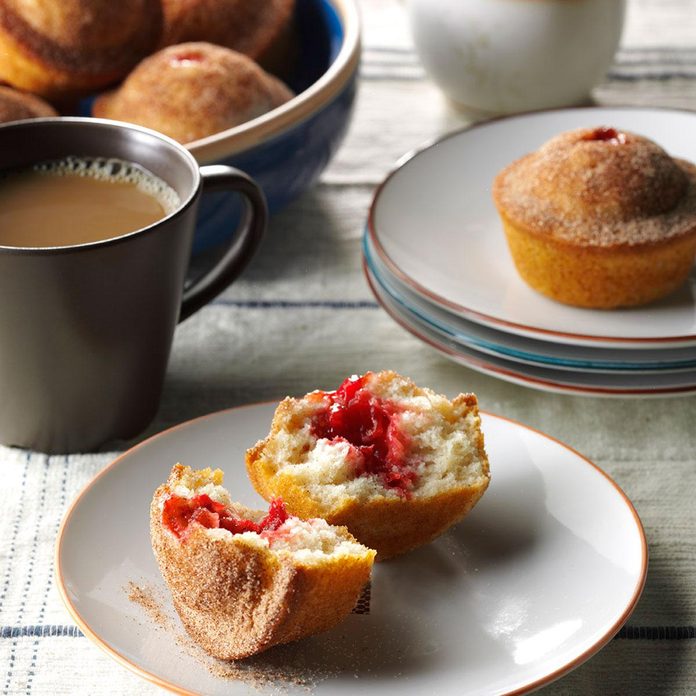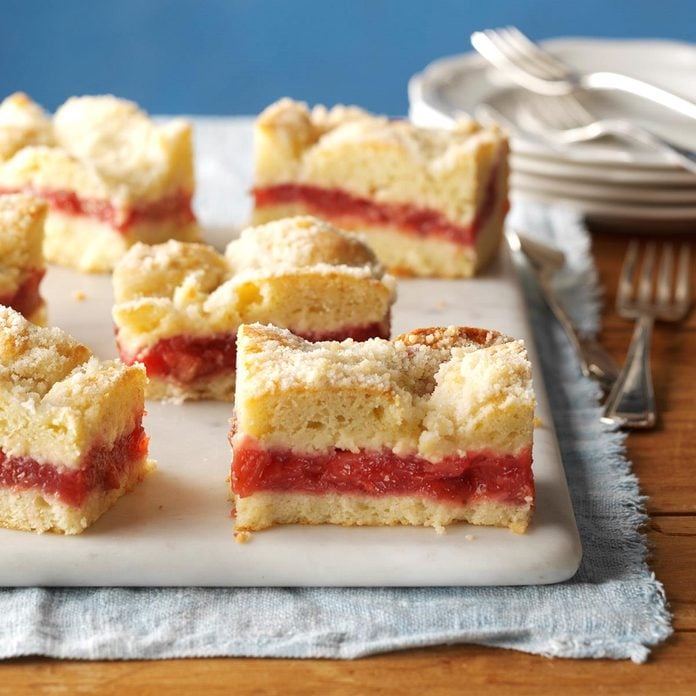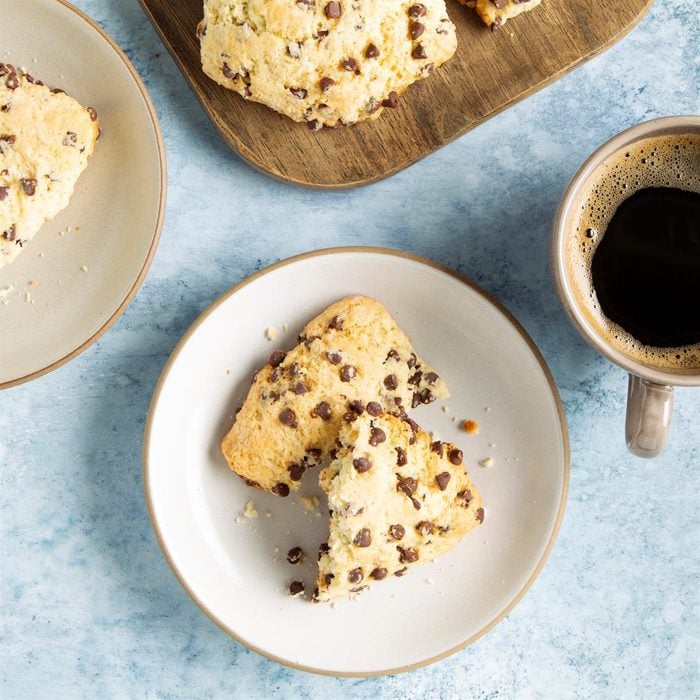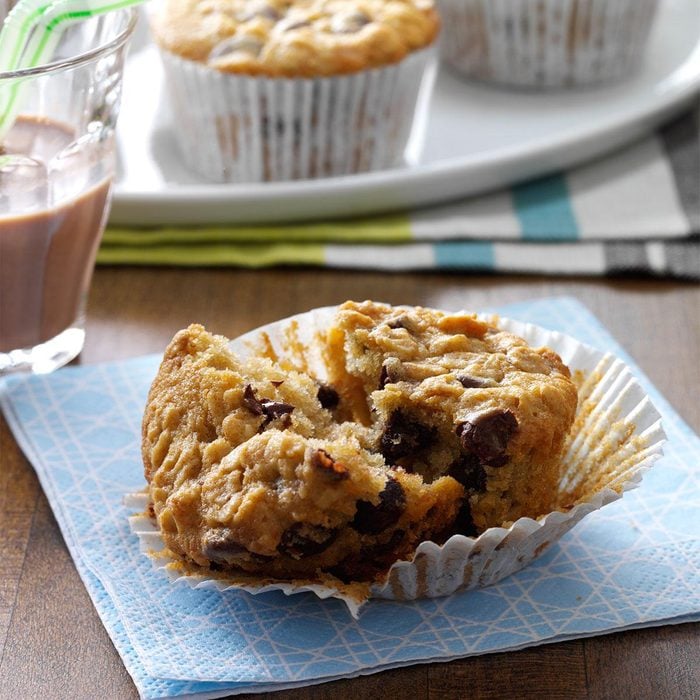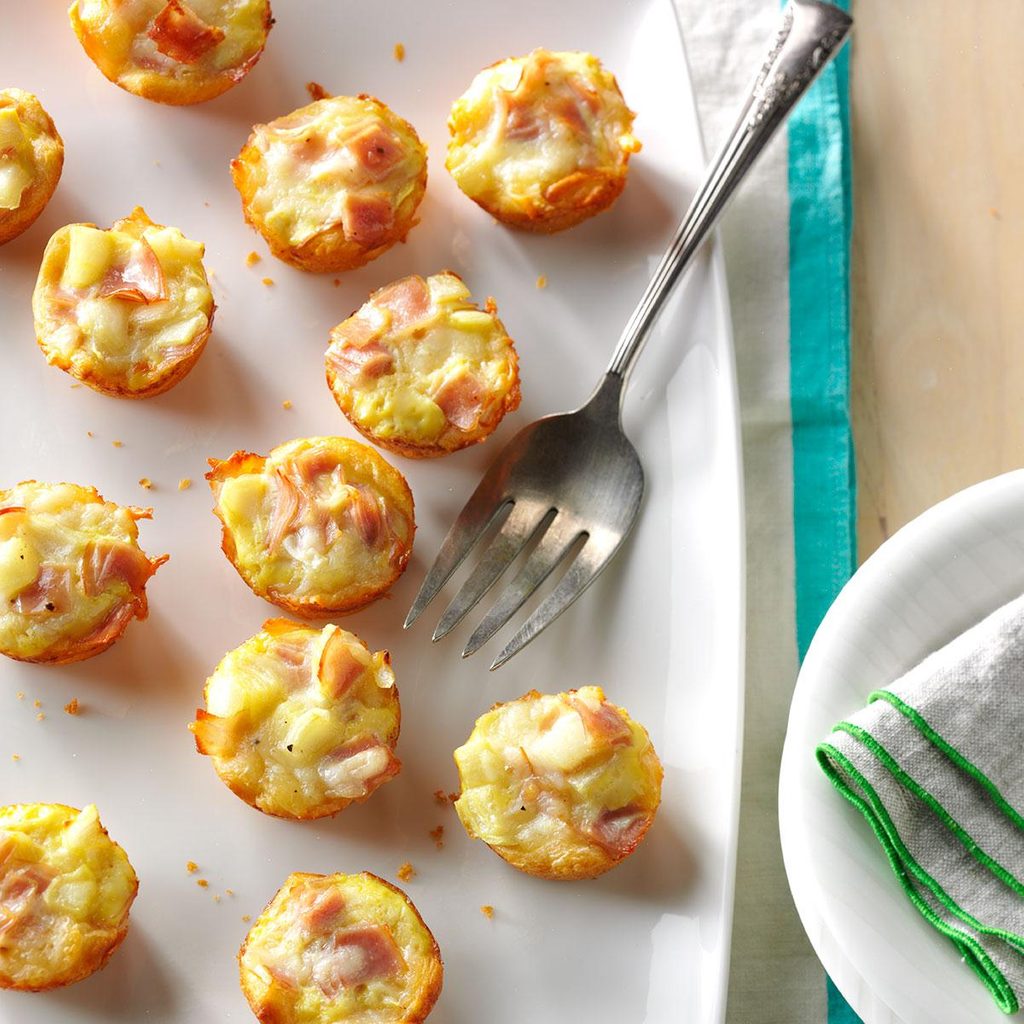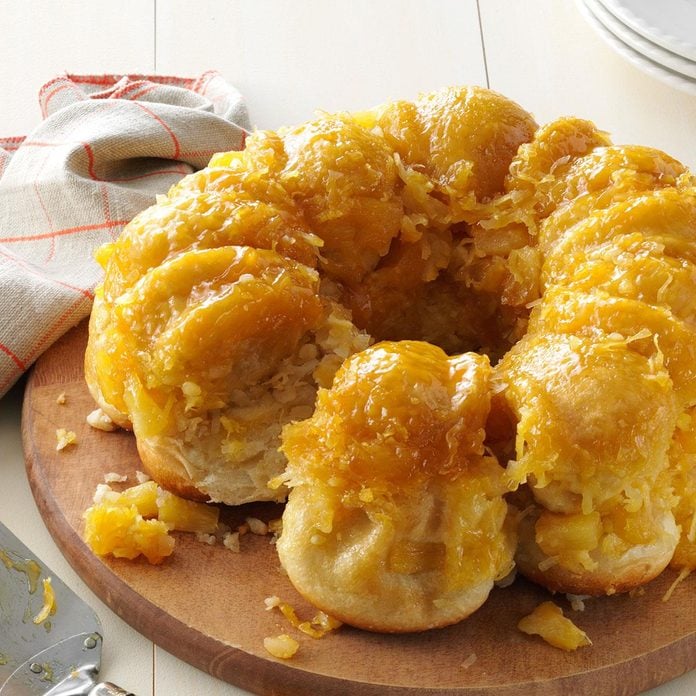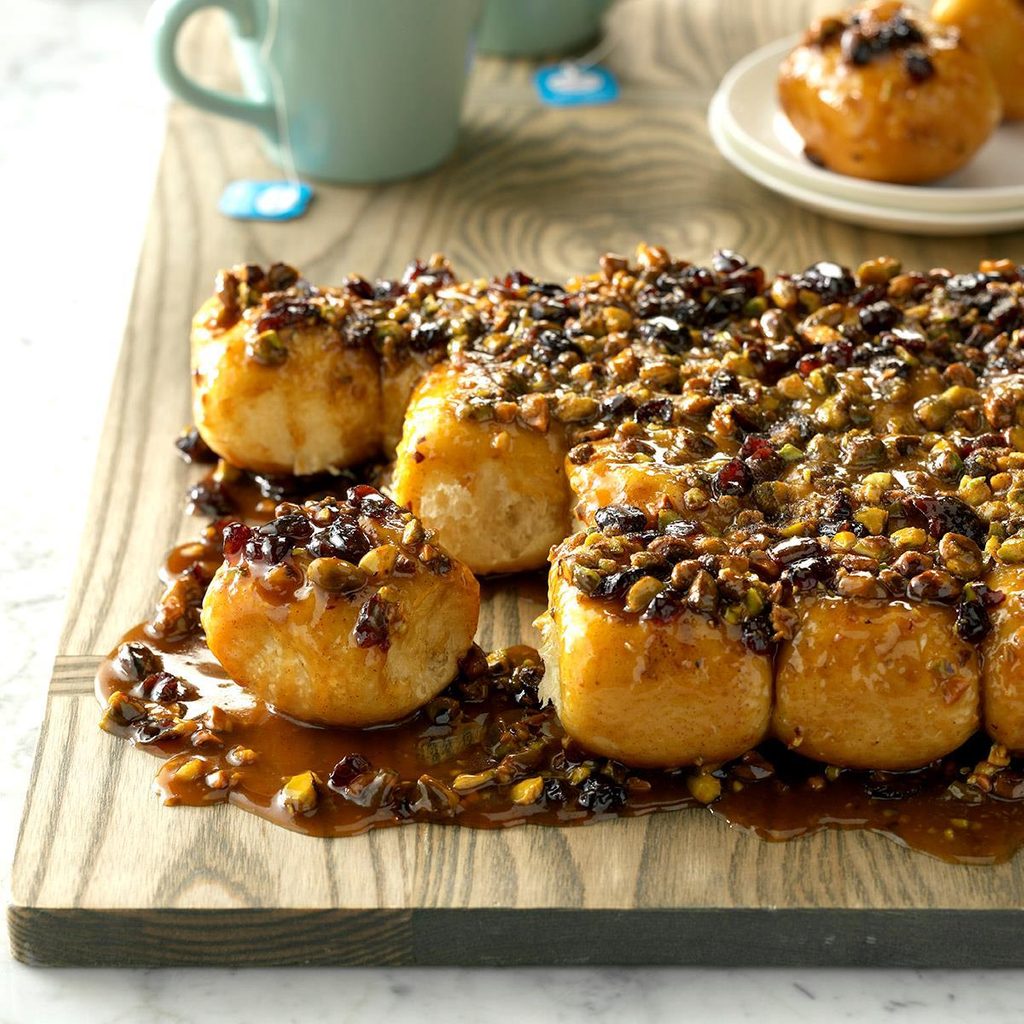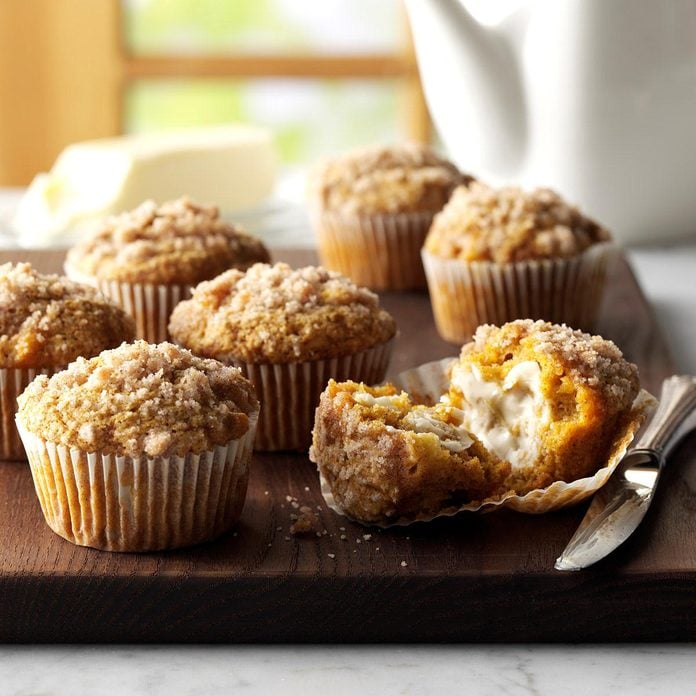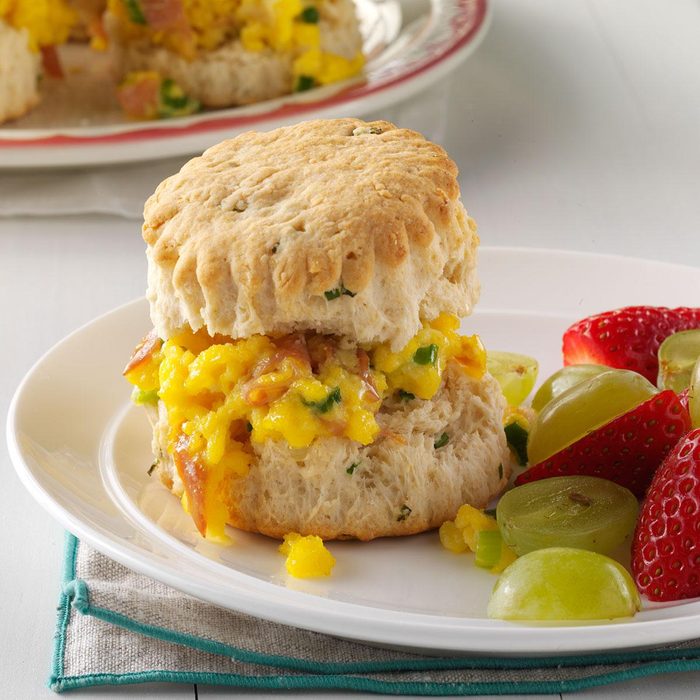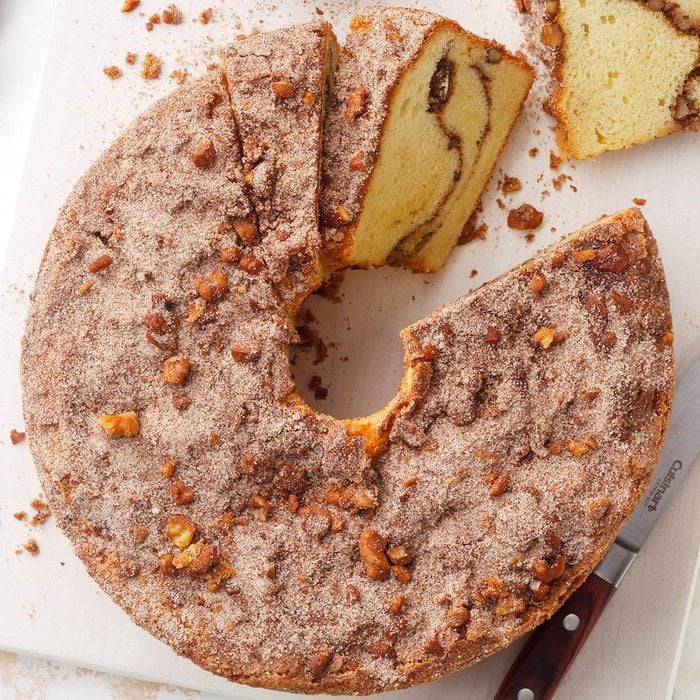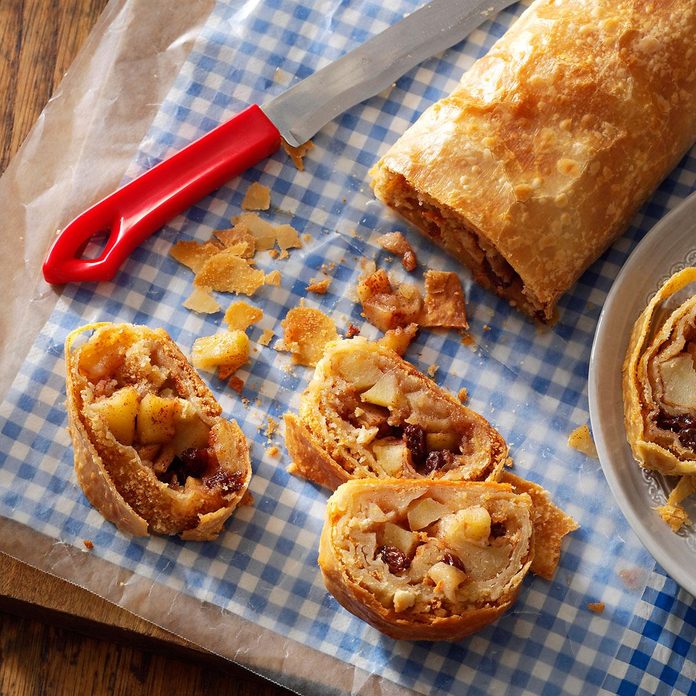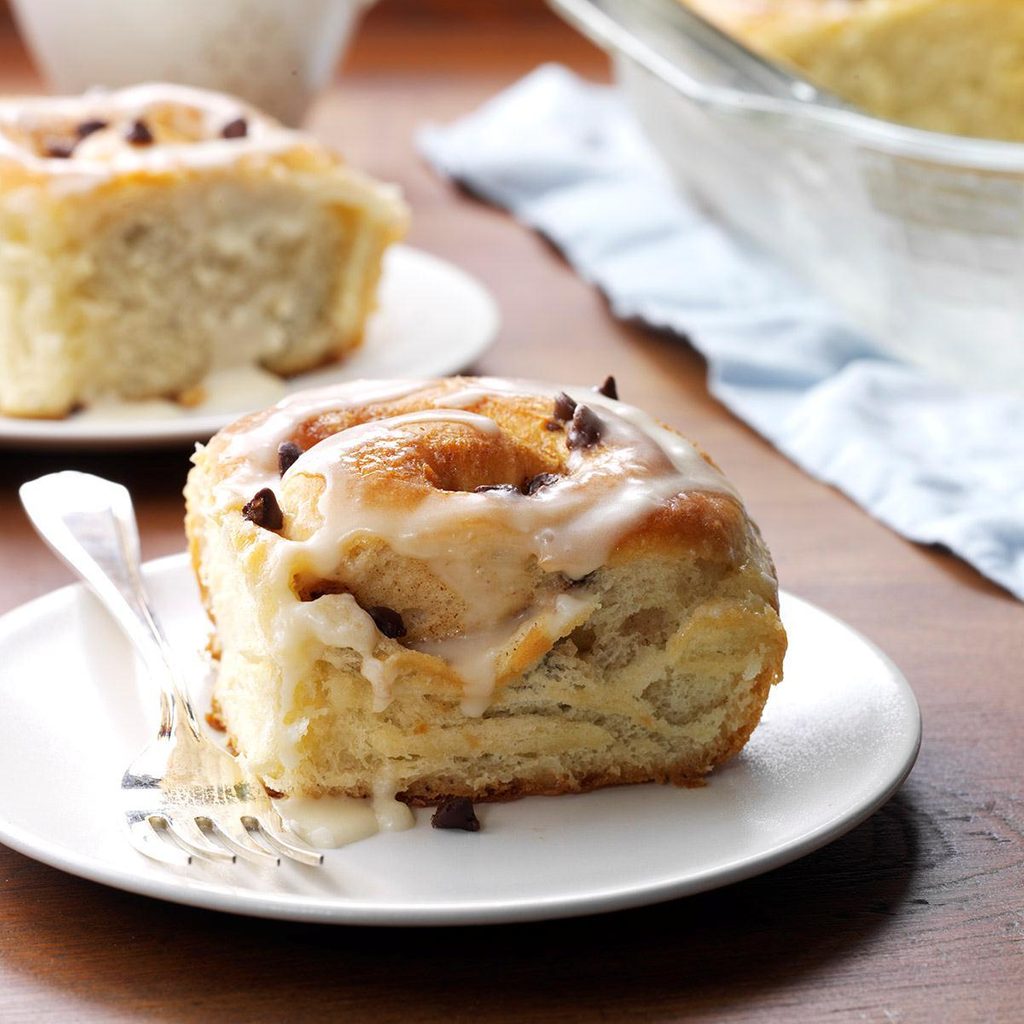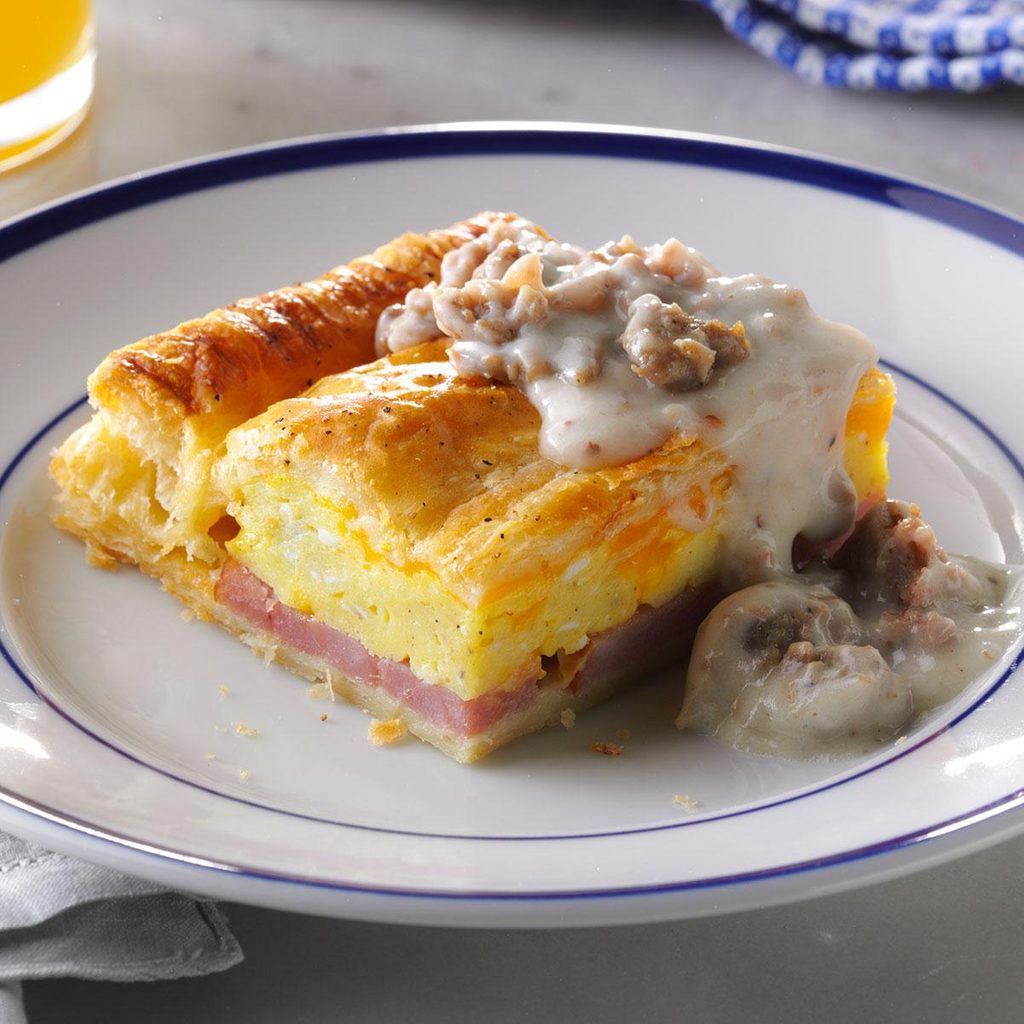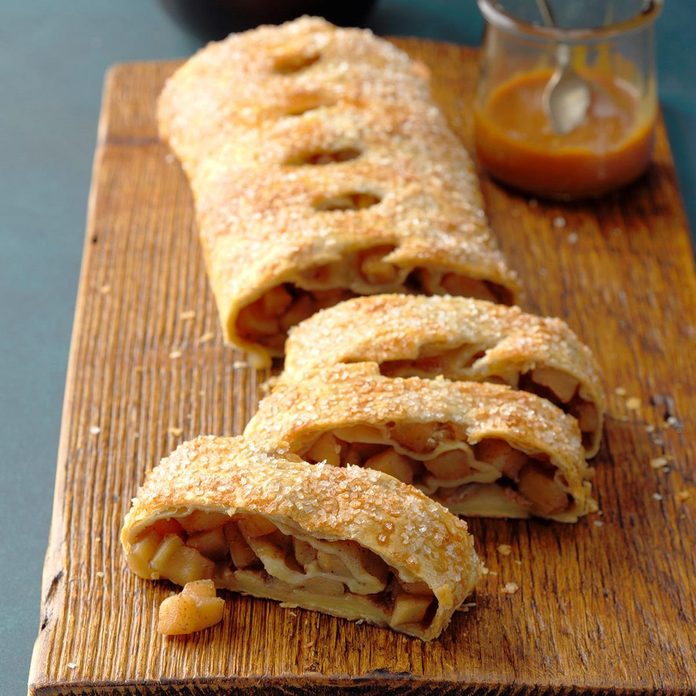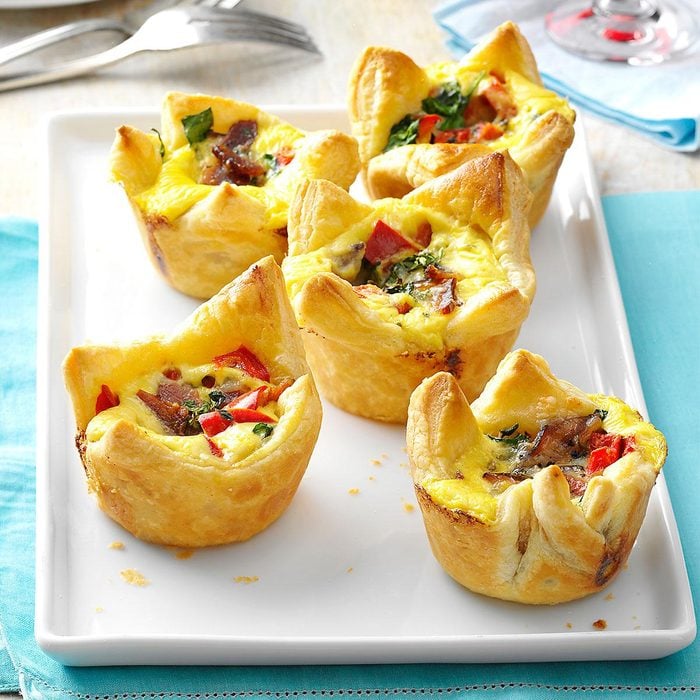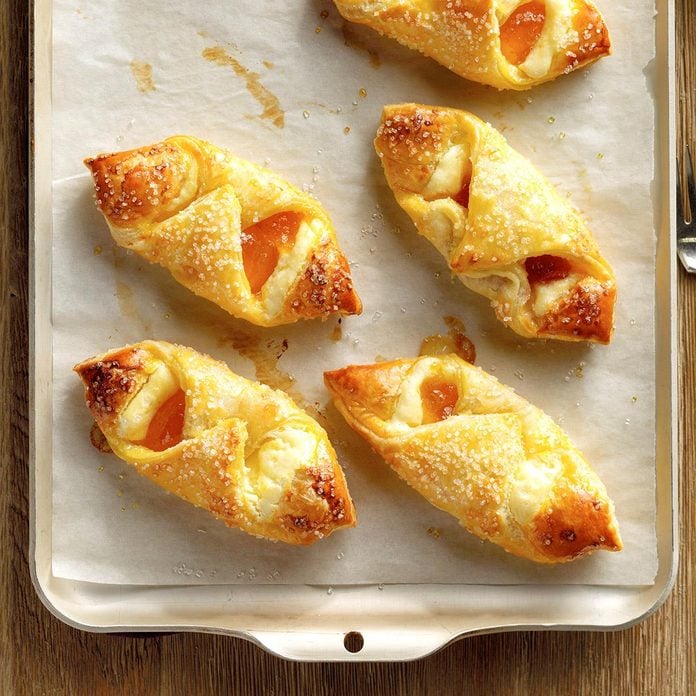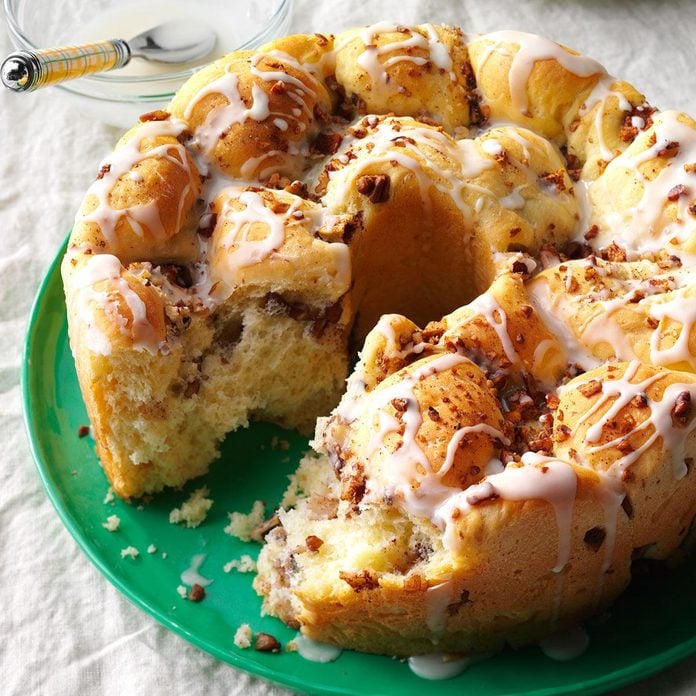Springtime Beignets & Berries
I've always loved beignets, but never thought I could make them myself. Turns out they're easy! Sometimes I'll even make a quick berry whipped cream and pipe it inside for a fun surprise. —Kathi Hemmer, Grand Junction, Colorado
Go to Recipe
Hazelnut Chocolate Chip SconesChocolate, hazelnuts and the tangy taste of buttermilk —these delicious scones are easy to make. They come together fast. —Trisha Kruse, Eagle, Idaho
Try this strawberry
scone recipe with cream next!
Maple Twist Coffee CakeIf you like maple flavor, you will love this recipe. It is so pretty with all the twists and is always a hit at bake sales I have brought it too.—Deanna Richter, Elmore, Minnesota
Red Velvet Cinnamon RollsTurn a box of red velvet cake mix into this easy dessert—or breakfast! The icing tastes good and makes a pretty contrast with the rolls. —Erin Wright, Wallace, Kansas
Pear-Berry Breakfast TartsWhen my kids were small, I could never get pancakes on the table while they were all still hot. Then I got the idea for these breakfast tarts. They're a good and simple recipe for any busy family. —Joan Elbourn, Gardner, Massachusetts
Spinach TurnoversThe flaky cream cheese pastry adds sensational texture to these hot appetizers—and just wait until you taste the wonderful filling. I usually fix a double batch and freeze some to have on hand in case unexpected guests drop by. — Jean von Bereghy, Oconomowoc, Wisconsin
Bananas Foster French ToastMmm…bananas Foster for breakfast! This yummy baked French toast serves up all the taste of the spectacular dessert in fine fashion. —Laurence Nasson, Hingham Massachusetts
Maple Sticky BunsMy family has a small sugaring operation in our backyard. This recipe makes good use of the maple syrup we make. It's a family tradition to serve these sticky buns on Thanksgiving every year. —Priscilla Rossi, East Barre, Vermont
Sugar Plum Phyllo KringleThanks to store-bought phyllo dough, this pastry is easier to make than it looks. Serve it not only for breakfast, but also for dessert with a scoop of ice cream. —Johnna Johnson, Scottsdale, Arizona
German Chocolate RingThis recipe is modeled after German sweet chocolate cake, which is my favorite, so it's no wonder I enjoy making and eating this sweet-tasting bread! You can make it ahead and freeze to bring out when you need an easy showstopper. —Anne Frederick, New Hartford, New York
Puffed Apple PastriesFor a little extra indulgence, serve these oven-fresh pastries with a scoop of creamy vanilla ice cream. Cherry pie filling can be substituted for the apple. —Taste of Home Test Kitchen
Check out these
16 puff pastry desserts that will satisfy your sweet tooth.
Chocolate Banana BundlesBanana with chocolate is such an irresistible combo that I make this quick dessert often. You can also top these tasty bundles with the butter and brown sugar mixture left over from coating the bananas, or sprinkle on a dash of sea salt. —Thomas Faglon, Somerset, New Jersey
Overnight Cherry DanishThese rolls with their cherry-filled centers melt in your mouth and store well unfrosted in the freezer. —Leann Sauder, Tremont, Illinois
Almond Bear ClawsThis bear claw pastry recipe is absolutely melt-in-your-mouth delicious! It's impossible to resist the delicate dough, rich almond filling and pretty fanned tops sprinkled with sugar and almonds. I made yummy treats like this when I worked in a bakery years ago. —Aneta Kish, La Crosse, Wisconsin
Fruit TartIt's well worth the effort to whip up this creamy fruit tart bursting with juicy berries. A friend gave me the recipe, and it always receives rave reviews at gatherings. —Susan Terzakis, Andover, Massachusetts
Ham & Cheese SconesI make these scones as a way to use up leftover ham. The cheesy, savory wonders are a delight as an appetizer or an afternoon snack. —Barbara Lento, Houston, Pennsylvania
Caramel-Pecan Sticky BunsMy mother used to make delicious cinnamon rolls when I was a child. Later, she taught my sister and me to make them. I've since added the caramel and pecans. These scrumptious sticky buns are a huge hit wherever I take them. —Judy Powell, Star, Idaho
Strawberry Shortcake PuffsWhen my wonderful friend Kelly brought me a pint of strawberries, I didn’t want to just eat them straight (tempting as it was). I decided to make strawberry shortcake with my own pretty, elegant spin. These light and airy puff pastry stacks let the fruit shine. —Jenny Dubinsky, Inwood, West Virginia
Cappuccino MuffinsThese are my favorite muffins to serve with a cup of coffee or a tall glass of cold milk. Not only are they great for breakfast, they make a tasty dessert or midnight snack. I get lots of recipe requests whenever I serve them. The espresso spread is also super on a bagel. —Janice Schulz, Racine, Wisconsin
Southern Brunch Pastry PuffMy family just about jumps out of bed when the smell of eggs, sausage and buttery pastry hits their noses. This recipe is morning magic. —Misty M. Leddick, Chester, South Carolina
Brie Cherry Pastry CupsGolden brown and flaky, these bite-sized puff pastries with creamy Brie and sweet cherry preserves could easily double as a scrumptious dessert. —Marilyn McSween, Mentor, Ohio
French Crescent RollsWhenever we have rolls and coffee after church, these come along with me. Here on the high plains, we've been raising cattle, wheat and daughters for 30 years. Our two oldest are grown, and our youngest just began college. —Betty Ann Wolery, Joplin, Montana
Cinnamon Doughnut MuffinsBack when my children were youngsters, they loved these doughnut muffins as after-school treats or with Sunday brunch. —Sharon Pullen, Alvinston, Ontario
Strawberry Rhubarb Coffee CakeAlthough my coffee cake makes a large pan, it never lasts very long! It's great for a Sunday brunch after church and nice to bring to family reunions, too. —Dorothy Morehouse, Massena, New York
Chocolate Chip SconesThese chocolate chip scones are delicious warm, served with butter, when the chips are melted and gooey. —Diane LaFurno, College Point, New York
Chocolate Chip Oatmeal MuffinsI saw this recipe in a newspaper years ago and have changed it quite a bit. I make these muffins at least once a month and get many requests for the recipe. —Cheryl Bohn, Dominion City, Manitoba
Ham and Cheese PuffsThese tasty little bites go over well with kids. They're also delicious with soups or as
party appetizers. —Mrs. Marvin Buffington, Burlington, Iowa
Island Breezes Coffee CakeWith the island flavors, this simple pull-apart bread is perfect for a spring brunch. —Debra Goforth, Newport, Tennessee
Cranberry-Pistachio Sticky BunsLooking for a fantastic brunch item? Then try these ooey-gooey good sticky buns. They use frozen roll dough and couldn't be simpler to make. The buns rise overnight in the refrigerator, so you just need to bake them the next morning.—Athena Russell, Florence, South Carolina
Pumpkin-Apple Muffins with Streusel ToppingMy mother always made these tasty muffins whenever our family got together at her house. Now they’re a family favorite at my house, and my in-laws love them, too! —Carolyn Riley, Carlisle, Pennsylvania
Prosciutto & Cheddar Breakfast BiscuitsWhen my family visits, I love to make my nephew Robbie happy by making any breakfast with pork and cheese. I created this as a twist on the traditional breakfast sandwich. —Kelly Boe, Whiteland, Indiana
Cinnamon Coffee CakeI love the excellent texture of this easy cinnamon coffee cake recipe. Always a crowd-pleaser, its pleasing vanilla flavor enriched by sour cream may remind you of breakfast at Grandma's! Make it the night before a holiday to save time in the morning. —Eleanor Harris, Cape Coral, Florida
German Apple StrudelThis gorgeous strudel has just what you crave this time of year: thin layers of flaky crust and lots of juicy apples. —Darlene Brenden, Salem, Oregon
Sweet and Spicy Chocolate Chip Cinnamon RollsThe addition of spicy chocolate cinnamon cane sugar adds a little bit of heat and an extra punch of cinnamon and chocolate to the filling of these cinnamon rolls originally shared by Patty Wynn of Pardeeville, Wisconsin. —Taste of Home Test Kitchen
Brunch Puff with Sausage GravyWhen company stays overnight, I make this puff with sausage gravy as a hearty breakfast treat. It’s meaty, cheesy and delightful with a fresh fruit salad. —Danielle Cochran, Grayling, Michigan
Caramel Apple StrudelMy father, who was born and raised in Vienna, Austria, would tell us stories about how his mother covered all the kitchen counters with dough whenever she made apple strudel. This recipe is a modern, delicious way to carry on part of my family's heritage. —Sarah Haengel, Bowie, Maryland
Quiche Pastry CupsMy grandmother used to make egg cup surprises for family brunches on special occasions. The added fillings were always a surprise since she never seemed to use the same combination of ingredients twice. As children, we took guesses as to what we'd find in the tender crust—the game always added fun to our meals. —Denalee Standart, Rancho Mureta, California
Puff Pastry DanishesEven though they're simple to make, these jam-filled pastries are right at home in a holiday brunch spread. They were my dad's favorite, so the recipe will always be close to my heart. —Chellie Helmke, Jackson Center, Ohio
Apple Pull-Apart BreadFor a fun sweet treat that's certain to satisfy, try this recipe. Drizzled with icing, each finger-licking piece has a yummy surprise filling of apples and pecans. It's well worth the bit of extra effort. —Carolyn Gregory, Hendersonville, Tennessee
